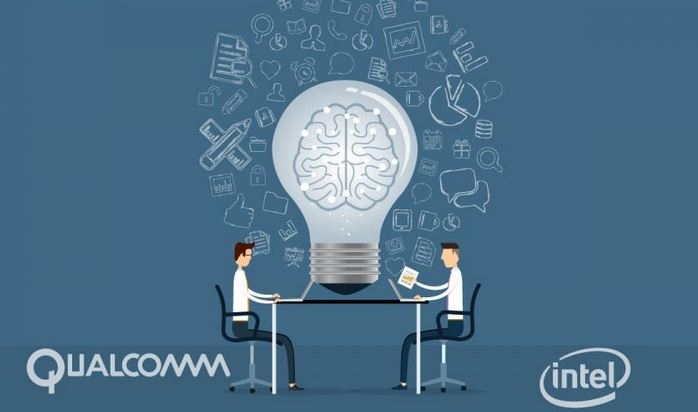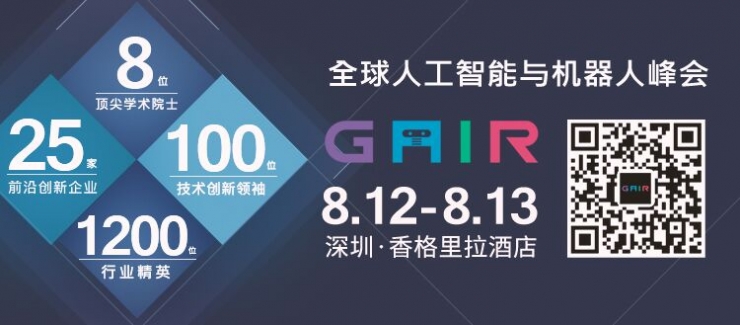
The latest news on the 21st, Beijing time, the world's two largest CPU processor vendors Qualcomm and Intel have announced their respective financial statements in the latest quarter, but compared with the data of the same period last year, the two companies' operating conditions can be described as a joy. .
Qualcomm's net profit rose 22%As the leader of the mobile-end CPU processor, Qualcomm’s net profit reached US$1.4 billion in the third fiscal quarter of fiscal 2016, a 22% increase compared to the net profit of US$1.2 billion for the same period last year. Revenue reached US$6 billion, an increase of 4% compared to revenue of US$5.8 billion in the same period last year.
At the same time, Qualcomm expects revenue in the fourth quarter of 2016 will reach US$5.46 billion, with a median value of US$5.8 billion, which is higher than the average forecast of Wall Street analysts of US$5.7 billion.
Affected by this, as of the morning of the 21st, Beijing time, Qualcomm shares soared 6.41% in the Nasdaq regular trading, and the daily price closed at 59.40 US dollars.
A careful analysis of Qualcomm’s financial report data shows that the thrust of the 22% increase in its profitability comes mainly from two aspects: First, the increase in patent license revenue. Qualcomm’s authorized revenue for the third fiscal quarter of fiscal year 2016 was US$2.169 billion, up from US$177 million in the same period last year. The second is the decline in R&D spending. Qualcomm’s R&D spending in the third quarter of fiscal year 2016 was only US$1.268 billion, which was US$139 million lower than the same period last year. This rise and fall of income and expenses together contributed to Qualcomm's third-quarter net profit growth.
One of the sources that cannot be ignored is the Chinese market for the growth of patent license revenue. Since the company agreed to pay a US$975 million anti-monopoly fine to China’s National Development and Reform Commission in February of last year, Qualcomm has ended its previous 14-month antitrust investigation. At the same time, Qualcomm also revised the patent fee rate for the Chinese market in accordance with the requirements of the National Development and Reform Commission. Overall, the rate was revised lower than the price it issued to other companies in the world. Then the company and China’s major mobile phone manufacturers re-signed. Patent licensing agreement. From January 2016, Chinese manufacturers LeTV as the world's first new mobile phone equipped with Xiaolong 820, and Xiaomi's rumors that Xiaolong's 821 new mobile phone will be launched in the world this autumn, we can see that Qualcomm attaches great importance to its business in China.
Qualcomm CEO Steve Mollenkopf said in an interview: "We currently have very strong business in China."
In contrast, the top spot of the traditional PC processor market, Intel's days can be less easy than Qualcomm.
 Intel Net Profit Drops 51%Intel’s revenue for the second quarter of 2016 was US$13.5 billion, an increase of 3% compared to the US$13.2 billion revenue for the same period last year; however, net profit was only US$1.33 billion, compared to the net profit of US$2.706 billion for the same period last year A drop of 51%!
According to Intel’s estimates, revenue for the full year of 2016 will eventually achieve a single-digit increase in the middle segment.
Affected by this, as of the morning of the 21st, Beijing time, Intel's stock price fell 1.82% in the Nasdaq regular trading, to close at 35.04 US dollars.
A careful analysis of Intel’s financial report data reveals that its subsidiaries including Customer Computing Group, Data Center Group, and the Internet of Things Group are all profitable. Even the customer’s computing group’s profit figures are still based on the US$1.603 billion in the same period last year. Rose by 368 million U.S. dollars. But why is it generally falling by 51% compared to last year? This will be calculated on operating losses of other businesses. According to the financial report data, in the second quarter of 2016, all other business operations except Intel Group's business groups suffered a loss of US$2.258 billion. This is the reason for the decrease in net profit. The first reason.
More specifically, this alleged loss of all other business operations refers to Intel's drag on restructuring spending. The company announced several plans to restructure and reduce its spending in April this year to release funds to invest in the growing server processor business line. The restructuring plan includes layoffs of 12,000 people by the middle of 2017, which is equivalent to 11% of Intel's total number of employees. In addition, Intel said it also filed a restructuring and other expenses of US$1.41 billion during the quarter, which of course also included a 51% decline in profits.
All along, as the PC market continues to decline, Intel's earnings report is not expected to be expected. CEO Brian Krzanich expressed more than once that he wanted to make Intel a new company under the “new computing eraâ€. Under the “new computing eraâ€, the status of PCs is obviously not as outstanding as before. Therefore, the focus of the transfer business has always been Intel's search and hard work.
In the smart phone market, although Intel has been trying hard, it has not achieved satisfactory results. The reason, first of all, is that when other companies in the industry are matching the LTE standard, Intel has mistakenly chosen WiMax wireless technology. Coupled with the PC business, Intel's further reduction in channel sales and marketing has led the smartphone chip market to be dominated by other chip makers such as Qualcomm, MediaTek, and Spreadtrum. And recently, Intel has also canceled the Atom chip development plan that had previously invested billions of dollars, which is essentially abandonment of smart phone and tablet computer chip business. Some media commented that even if the Atom chip business is finally developed, Intel's lack of connectivity on the mobile side will not produce any substantial changes.
 The future may be in artificial intelligenceFor the entire year of 2015, sales in the Chinese market only increased by 7.7%, making it the only growth area in Qualcomm globally. However, with the favorable policies in the domestic market in 2016 and the increasing demand for chips, Chinese domestic chips will enter a period of rapid development. Various domestic mobile phone manufacturers have also taken this opportunity to invest in the chip business, and they are trying to get rid of the supply of Qualcomm. Chain constraints.
For example, Huawei has already begun to use the Kirin series of independent research and development of chips, and Xiaomi has been authorized by ARM's full range of chip architecture last year. According to the latest news, more than 500 Xiaomi employees have already invested in the R&D of their own processors.
In addition, most of Samsung's foreign products have their own version of the Exynos processor and two versions of the Qualcomm version. According to rumors, they will also release their own second-generation processor Nuclun 2 on the mobile terminal.
All these indicate that Qualcomm will not be too long in the future to dominate the mobile CPU market.
Since Qualcomm is not on the mobile side and Intel is not on the PC side, where is the future of the two giant chip giants? From some of their recent moves we can see some clues.
In December of last year, Intel showed a number of smart robot products to the public at the opening ceremony of Intel China Research Institute. In May this year, Intel initiated the Space Accelerator Robot Sharing Session at the National Convention Center. In July, Intel announced that it would cooperate with BMW, a driver assistance system research and development company Mobileye, to develop a self-driving car, and announced that it will officially launch a production version in 2021.
Intel CEO Brian Krzanich declared in the Fortune's Brainstorm Tech that Intel who missed the wave of smart phones will take the lead in the field of smart cars in the future.
Of course, Intel wouldn’t really be a robot or a self-driving car. Instead, it intended to deepen its artificial intelligence on this future technology and gradually build an artificial intelligence development platform based on Intel technology, just as they once did in the PC market. That way. In fact, at this year's Intel Information Technology Summit, Intel has launched the Somatosensory Robotics Development Kit - RealSense SDK. The SDK can provide developers with many different features such as face recognition and gesture recognition.
Looking back at Qualcomm, as early as September 2014, the company acquired Euvision Technologies, an artificial intelligence image recognition technology company headquartered in Amsterdam, the Netherlands. At the 2015 Phoenix LINK+ conference held in August last year, Qujing Global Vice President Shen Jin also publicly stated that the inflection point of artificial intelligence has already arrived, and he revealed that the company will host artificial intelligence in Qualcomm's next-generation chips. In May of this year, Qualcomm launched a new software toolkit for its "machine intelligence platform" that will help corporate developers using Qualcomm chips to more easily run deep learning programs directly on smartphones and drones. Visible, Qualcomm is also in the field of artificial intelligence has stamina.
Not long ago, Didi's founder and CEO Cheng Wei and Baidu's founder and CEO Robin Li had publicly stated on different occasions that the future of the Internet is artificial intelligence. By then, artificial intelligence technology will change every aspect of people's lives. From the actions of the giants of Qualcomm and Intel, the future of artificial intelligence is likely to change their lives and deaths.

Low-voltage Reactive Power Compensation Cabinet
Low-Voltage Reactive Power Compensation Cabinet,Low Voltage Intelligent Reactive Power,Low Voltage Products Reactive Power,Ac Low Voltage Reactive Power Compensation Cabinet
TRANCHART Electrical and Machinery Co.,LTD , https://www.tranchart-electrical.com